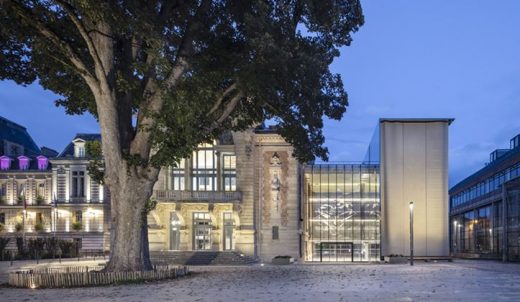Color temperature tips, home lighting guide, Property lamps advice, Building design
Color Temperature: how to give your home better lighting
18 July 2021
Are you preparing a lighting plan? If so, here’s a complete guide about color temperature for you. We’ve gathered different ideas to make your preparation easier.
Here’s a thing about making your home or office a beautiful place or a comfortable haven – We all need a reliable guide about everything. The main purpose of doing this is to save money by completing the work on time and without spending on unnecessary products.
So buying those much-needed materials, décor, lighting fixtures and more should be based on a well-researched and detailed plan. Read the following guide to achieve the best lighting for your space especially in using LED light fixtures.
What is Color Temperature?
By definition, color temperature is a mode to describe the light appearance made by a light bulb. Basically, it’s measured in degrees of Kelvin (K) on a scale from 1,700 t0 10,000. Simply put, the color temperature of a light bulb allows us to know the look and feel of the light it illuminated in a given space.
In addition, the color temperature of a light bulb is assigned by means of correlated color temperature or CCT. For instance, a metal object appears to glow if you heat it up. With the, the glow will produce different colors like orange or yellow depending on the Kelvin temperature that the metal object is being heated at that time.
How is Color Temperature Measured?
As mentioned earlier, an essential element of visible light that is color temperature is measured in Kelvin. It also helps to define how warm or cool a light source will be. It is interesting to note that the lower the temperature, the warmer the tone.
Why Does Color Temperature Matter?
The mood of a specific room is often derived from the color temperature of the light bulb fixtures. No wonder identifying the best color temperature for every room is an important factor in preparing a lighting plan. If you need an energising light, opt for a high color temperature. On the other hand, a lower color temperature will create a warmer, more relaxing illumination.
What Does Color Temperature Mean in LED Lights?
We know that color temperature is directly related to the color of the light source. If you choose a LED light bulb, your options include warm, cool, natural or daylight. In specific applications, you should pick the best color.
Standard Color Temperatures in the Home
Basically, LED lights color temperature affects the look of your room, how we see things, our emotions, and sleep cycles.
In every room in your home, you will need a different color temperature based on the application in each one. Interestingly, LED lights have a range of colors to choose from. Warm light includes yellow, orange and red. On the other hand, cool light comprises blue and green. Aside from that, light appears crisp and white in between the two.
The standard color temperature for home lighting fixtures are warm white light, natural white light, daylight white light, and cool white. Overall, your choice of color is based on your intention of using the light bulb and personal inclination.
Which Color Temperature Should I Choose For My Home?
The basic questions to ask in choosing color temperature for lighting include which type of room you want to illuminate pertaining to relaxation or work purposes. The next one may be related to the reasons for the use of a specific light bulb’s color temperature. Is it for general or feature lighting?
Aside from that, you can also consider the ambience you’re trying to create in each room. Do you like the mellow or stark feel?
The interior design plays an essential role in choosing the right color temperature. Is your room traditional? Is it minimalistic? With that, your personal choice is also a major factor in choosing the color temperature.
For living spaces, warm white bulbs are perfect. It’s also advisable for the bedroom in which we usually relax. Since it’s mellow, you’ll feel comfortable in using the room.
The functional rooms, such as the bathroom and kitchen, need a more penetrative form of light. After all, task-related activities are carried out in those rooms. With that, the suggested color is cool white that is a lot brighter than warm white.
The best Color temperatures for each room of your home
According to Health Lighting, one of the most important things to remember is that there are no agreed-upon standards for each color temperature. For example, a certain manufacturer might call it “warm white” and another one refers to it as “soft white” for some reason.
No wonder it’s proper to refer to color temperatures based on science instead of descriptions for marketing purposes. Here are specific guidelines in doing so.
For the bedroom, the perfect choice is from 2,700-3,800K.
Basically, a softer, warmer light is a better option than a very white and stimulating light. Besides, this warm white range is a fine place to start.
For the living room, opt for a range from 3,800-4,500K.
The typical choice here is natural white. After all, it’s a soft and neutral range that works well in “neutral” spaces like living rooms.
For the bathroom, the ideal range is from 3,600-4,200K.
Obviously, it’s similar to our living room recommendation, yet a bit warmer. We find this range to be both soothing and natural.
For the kitchen, the best choice is from 4,000-5,000K.
Well, a higher natural white range is perfect here. With that, 4000K is more neutral, while 5000K will give off a whiter, brighter, and “cleaner” effect.
For the office, opt for a range from 4,500-5,500K.
It’s still natural yet white enough to promote alertness.
For art galleries and museums, the best choice is from 3,900-4,200K.
This is often called neutral white. Unlike cool and warm whites, neutral white reproduces all colors equally well, so it’s the ideal preference for displaying merchandise, art, or photography.
Other Factors to Consider in Lighting
There are other qualitative factors to look out for in lighting. It has something to do with the same color temperature yet having different light. In other words, two light bulbs can have the same color temperature while varying tremendously in appearance.
The other descriptive elements of light bulbs are lumens and CRI or color rendering index.
Lumens are the brightness of the light emitted by a bulb. It’s like determining how powerful the bulb is.
On the other hand, CRI or color rendering index is a measure that is most indicative of a light’s quality. CRI is a measure on a scale of 1 to 100 of how accurately a light source reproduces colors compared to natural sunlight that has a CRI rating of 100.
For instance, a light bulb with a CRI above 90 is considered good. If the rating is above 95, it’s excellent for color vibrancy and a more natural-looking interior. As a suggestion, stay away from CRI ratings below 85, which have a dulling effect on surroundings.
In that case, if two bulbs with a 4,200K color temperature give off a similar color of light, one can be brighter and duller than the other if it has a higher lumen count yet lower CRI.
How to Select Color Temperature by Application
We have already provided an initial explanation about choosing color temperature based on application. However, there are still important things to consider that we haven’t mentioned beforehand. Regency Lighting has provided a simplified guide for that matter.
For outdoor site lighting, parking garages, and security lighting:
Efficiency is typically the priority over color temperature in this application. We prefer the 3,000-4,000K range, but cooler color temperatures in 4,000-5,000K+ range tend to be most common.
For general retail lighting:
The factors to consider in choosing the right color temperature for retail are based on the brand, atmosphere, and even location. With that said, most retailers in the US choose lighting within the 2,700K to 4,000K range. Others also choose to mix color temperatures.
For jewelry display lighting, especially diamonds or silver:
Here, the cooler color temperatures in the 3,500-4,500K+ range are perfect.
For jewelry display lighting, involving mixed metals:
It’s common to alternate warm (2,700K) and cool (4,000K) temperatures based on what’s on display in this application.
For high-end restaurants lighting:
Here, warmer color temperatures (1,800-2,700K) tend to work well.
For quick-serve restaurants lighting:
Warmer color temperatures also tend to work well in quick-serve restaurants, but not quite as warm as high-end restaurants. Try to consider lighting in the 2,700K to 3,500K range.
For hotel lobbies lighting:
As similar to retail, hotel lighting can vary significantly based on the brand, atmosphere, and location. That means warmer color temperatures in the 1,800-3,000K range work well in hotel lobbies.
For hallways and common areas lighting:
In general, match the color temperature of hallways and common areas to the lobby.
For guestrooms lighting:
Typically, guest rooms do fall in the 2,700-3,000K range, creating a warm, inviting atmosphere.
For office space lighting:
Neutral to cool color temperatures (3,000-4,000K) are generally appropriate in office space.
For hospitals lighting:
Always remember that cooler color temperatures (3,500K to 5,000K) are good for setting a clean crisp atmosphere and creating alertness in a hospital.
For dining areas lighting:
In dining areas, warmer color temperatures tend to work well. Just consider lighting in the 2,700-3,500K range.
For common areas and classrooms:
In common areas and classrooms, cooler color temperatures (3,500-5,000K) are good for setting an energetic atmosphere and promoting alertness.
Questions to Ask When Selecting Color Temperature
After going through this entire guide, we think it’s wise to exhaust all the details in preparing a lighting plan. Here are specific questions to ask when selecting color temperature.
What atmosphere are you trying to create?
The basic guide to create a suitable atmosphere for a specific room is to think about your audience and how you want them to feel when they are in your place. For example, you need to pick warmer color temperatures that range from 2,700K to 3,500K if you want a cozy lobby.
What kind of colors are you highlighting in your space?
In case you have blue, silver, or white colors in your space, you may want to consider cooler color temperatures. If you have wood tones, golden hues, or reds, you may want to consider warmer color temperatures. With that, you can also opt for neutral tones.
Which Color Temperature is best for eyes?
During the day, it’s best to use the default color temperature of 6,500K. On the other hand, the color temperature at night should be warmer, and around 3,400K.
What LED light color is best for your sleep?
Basically, a dim red light color is best for sleep since it has a low color temperature, far lower than regular sunlight. With that, you can be absorbed in red light at night without giving your body a shock and changing your internal clock as blue light does.
What LED lights help you to relax?
Many researchers confidently declared that blue lighting accelerates the relaxation process that usually happens after stress in comparison with conventional white lighting. Simply put, you can chill out three times faster with the said color temperature.
Are LED lights good for reading?
LEDs make great reading lights. They’re directional light sources and that means they emit light in a designated direction.
When it comes to reading, the right color temperature is essential. White LED fixtures are perfect if you’re reading to work or study. However, reading with a white light at bedtime can boost alertness and delay sleep by up to three hours.
What color temperature is best for indoor lighting?
The best color temperature for indoor lighting is a range from 2,200-2,700K. It produces a warm light that’s best for low-light areas where ambient lighting is necessary.
How to soften outdoor LED light?
We know that outdoor lighting is beneficial. They’re practically useful to deter burglars. If done right, they’re visually stunning and add value to your outdoor space.
If your outdoor LED lights are too bright, there are three ways to soften them. First, replace the bulbs and opt for bulbs that aren’t as bright but also have a warmer color temperature. Second, install a dimmer. Obviously, a dimmable lighting fixture is perfect if you want to control the illumination outside the house. Third, use softening sheets.
Comments on this guide to color temperature: how to give your home better lighting article are welcome.
Lighting Design
Light Posts
How to choose LED batten light fixtures
Reasons Why You Should Switch to LED Lights
Building Articles
Théâtre “Legendre” in Evreux, France
Design: OPUS 5 architectes

photo : Luc Boegly
Théâtre Legendre Evreux
Comments / photos for the Color Temperature: how to give your home better lighting advice page welcome





